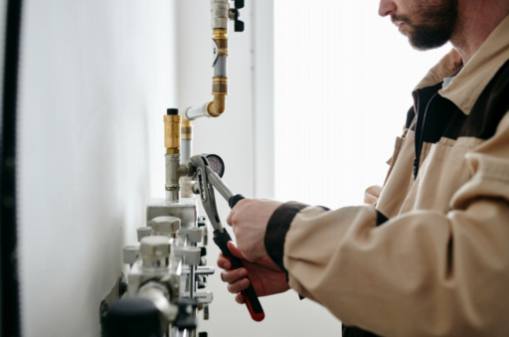As a homeowner, one of the most important aspects of maintaining your property is preventing and addressing leaks. Not only can leaks cause costly damage to your home, but they can also lead to potential health hazards and structural issues if left untreated. In this article, we will explore the importance of understanding the basics of leak prevention and provide practical tips for implementing a proactive maintenance approach to keep your home leak-free. With regular inspection and maintenance schedules, identifying potential leak sources, and implementing preventative measures, you can take control of your home's upkeep and help prevent future leaks before they become a major problem.

Understanding the Basics of Leak Prevention
By understanding the basics of leak prevention, homeowners can take proactive measures to address potential issues before they escalate into major problems. This includes regular inspection and maintenance schedules, identifying potential leak sources, implementing preventative measures, and having a proactive replacement and repair strategy in place. Additionally, monitoring systems and emergency response plans are essential components of a comprehensive leak prevention plan.
Regular Inspection and Maintenance Schedules
By routinely checking for any signs of wear and tear or potential issues, homeowners can stay ahead of potential leaks and take proactive measures to address them before they become major problems. This can include inspecting plumbing systems, roofs, windows, and other potential leak sources on a consistent basis to ensure that everything is in good working condition. Additionally, establishing a maintenance schedule for tasks such as cleaning gutters, inspecting seals and caulking, and checking for any signs of water damage can help to identify and address potential leak sources before they escalate. By prioritizing regular inspection and maintenance, homeowners can take a proactive approach to preventing future leaks and preserving the integrity of their homes.
Identifying Potential Leak Sources
Some common areas to check for potential leaks include plumbing fixtures such as sinks, toilets, and showers. Additionally, it is important to inspect pipes for any signs of corrosion or damage. Roofing and windows are also common areas where leaks can occur, so it is essential to regularly inspect these areas for any signs of water damage or wear and tear. By identifying potential leak sources, you can take proactive measures to prevent future leaks from occurring in your home.
Implementing Preventative Measures
This can include sealing cracks and gaps, installing waterproofing membranes, and using quality materials for plumbing and roofing. Additionally, incorporating water-saving fixtures and appliances can also help reduce the risk of leaks and water damage. By taking proactive steps to prevent leaks, homeowners can create a more resilient and low-maintenance living environment.
Proactive Replacement and Repair Strategies
Over time, the materials and fixtures in your home can deteriorate, leading to potential leaks. By identifying and addressing potential issues before they become major problems, you can save yourself time, money, and stress down the line.
One proactive strategy for preventing leaks is to regularly inspect and maintain the various components of your home. This includes checking and replacing worn or damaged seals, caulking, and gaskets around windows, doors, and plumbing fixtures. Additionally, keeping an eye on the condition of your roof and siding can help you identify and address any issues before they lead to leaks.
Another important proactive strategy is to stay on top of any necessary repairs or replacements. Whether it's a small leaky pipe or a worn-out water heater, addressing these issues promptly can help prevent larger, more costly problems in the future. Investing in high-quality, durable materials and fixtures for your home can also help prevent leaks from occurring.
In addition to repairing or replacing worn or damaged components, it's important to stay vigilant and address any signs of potential leaks as soon as they arise. This could include water stains on ceilings or walls, musty odors, or pooling water around fixtures or appliances. By addressing these issues promptly, you can prevent further damage and mitigate the risk of future leaks occurring.
Taking a proactive approach to replacement and repair strategies can help you maintain a leak-free home and ensure the longevity of your modern home's materials and fixtures. By staying ahead of potential issues and addressing them promptly, you can save yourself time, money, and stress in the long run.
Monitoring Systems and Emergency Response Plans
This can include installing water sensors in key areas of the home, such as near appliances, pipes, and in basements or crawl spaces. These sensors can alert homeowners to any sudden increases in moisture, allowing for quick action to be taken.
Furthermore, it is important to have an emergency response plan in place in the event of a leak. This includes knowing where the main water shut-off valve is located and how to turn it off to stop the flow of water. It is also essential to have the contact information of a trusted plumber or water damage restoration company on hand for immediate assistance if needed.
By implementing monitoring systems and having an emergency response plan in place, homeowners can be proactive in preventing future leaks and minimizing the potential damage they can cause.
